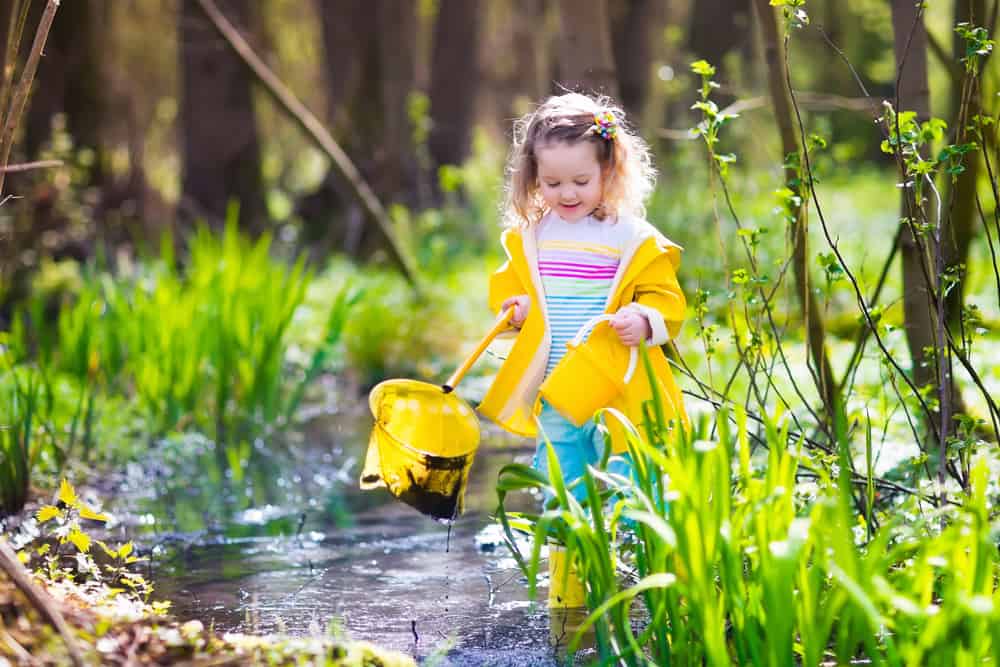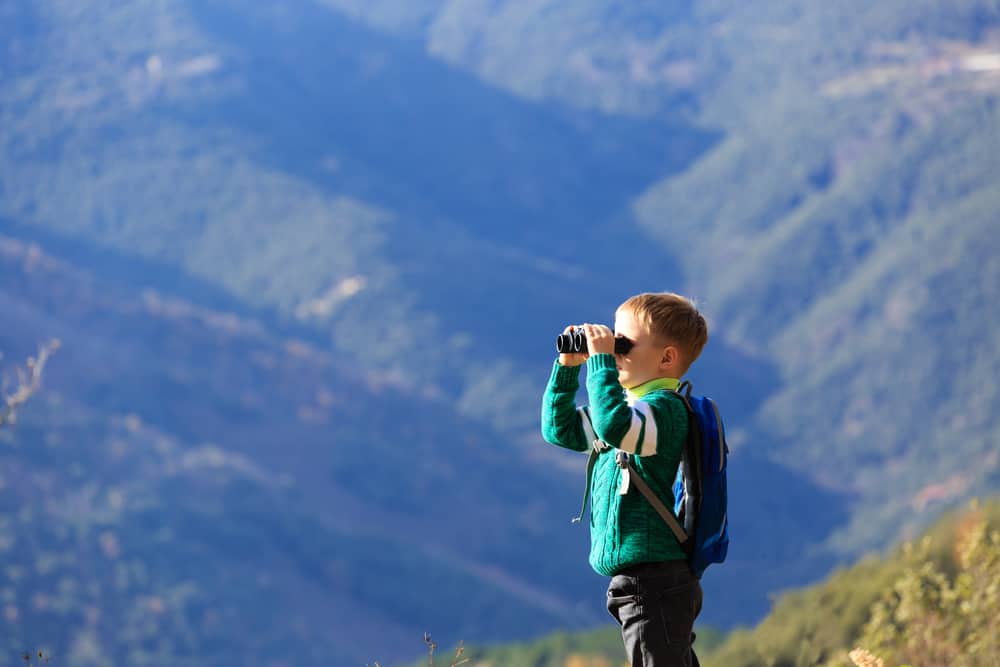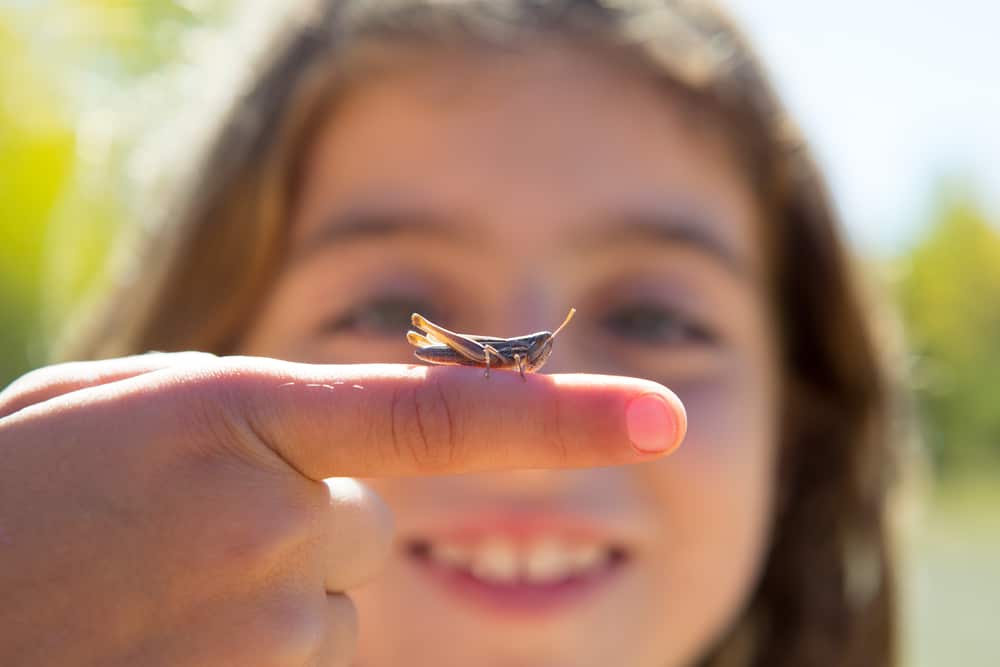The weather is beautiful, and you want to get outdoors with your family, away from TV and video games. Lace up those walking shoes and take the kids on a hike. Look for a big park, a nature preserve or a designated open space with trails that’s a short drive from home and hit the road.
Wait, you might be thinking, is hiking as a family even doable? We don’t have gear, my kids are bound to get tired and complain, and I have no idea how to make hiking fun. Besides, how many miles can a kid even hike?
Relax. Hiking with kids can be tons of fun, but you need to think ahead a bit. Here are some tips for planning a hike with kids that will guarantee a fun family adventure for all.
Pick a kid-friendly trail
When hiking with kids, be sure the hike is appropriate for the age and abilities of the kids you’re taking. Kids younger than 6 won’t hike as far or be as interested as school-age kids. How many miles can your kids hike? We recommend starting with a one-mile or shorter flat trail for the littlest kids. Elementary-school kids can walk a few miles; try 2 or 3 miles for a first hike. Tweens and teens can go even farther.
Don’t make the hike too long or kids will get tired and cranky. Better to have it end before they’re tired, so they’ll want to go again.
We’ve found that kids are more motivated if there’s a reward at the end of the hike or things to do along the way. A toddler might enjoy a short nature trail, perhaps with a hollowed-out tree to explore a stepping-stone path over a stream. Older kids might be motivated by a waterfall, beach or scrambling rocks at the end of the trail.
Be prepared for your family hike
Make sure kids wear sturdy shoes and clothing appropriate for the weather (preferably with layers that can be put on or taken off as the temperature rises and falls). Definitely wear or pack a hat and a jacket, in case the weather turns iffy. If you are pretty sure it’s going to rain, hike another day.
Don’t forget to apply sunscreen or bug spray BEFORE you head out, and take a small bottle with you to reapply mid-hike. Each kid needs a light backpack with water, more snacks than you think you’ll need, notebook and pencil. They might want to bring a stuffed animal (for companionship) or a kid camera if they have one.
Parents will want to pack a first-aid kit with plenty of bandages, extra water and a camera for capturing all the highlights. If you’re hiking with a toddler, know that they’ll likely ask to be carried at some point. If you still have a baby carrier that can hold their weight, you’d be wise to pack it.
- Ortho Home Defense Insect Killer for Indoor & Perimeter2 is a bug killer spray that kills the toughest home invading insects, including ants, cockroaches, spiders, fleas, ticks, scorpions, earwigs, silverfish, and periodical cicadas (as listed)
- Provides a long-lasting bug barrier of up to 12 month protection (against ants, roaches, and spiders indoors on non-porous surfaces)
- Apply this pesticide anytime as a preventative treatment or after you see evidence of insect activity
- One 15 oz can of Raid Multi Insect Killer kills bugs on contact, including ants, Asian lady beetles, boxelder bugs, carpet beetles, crickets, firebrats, fleas, silverfish, flies, fruit flies, non-biting gnats, hornets, mosquitoes, roaches, and spiders (except brown recluse and black widow spiders)
- Raid Insect Killer works where crawling and flying bugs are causing issues, both indoors and outdoors
- This pest killer comes in an easy-to-use spray with an orange breeze scent and no lingering chemical odor for a pesticide that helps you work smarter, not harder, to fight bugs in your home
- FAST KNOCKDOWN: Kills listed insects on contact* and keeps killing up to 3 months.**
- KILLS INSECTS INDOORS: Hot Shot Ant, Roach & Spider Killer kills ants, cockroaches, spiders, fleas, silverfish, firebrats, crickets, Asian ladybeetles, carpet beetles, waterbugs, palmetto bugs and stink bugs indoors.
- KILLS INSECTS OUTDOORS: This product kills ants, cockroaches, spiders, fleas, crickets, Asian ladybeetles, stink bugs, palmetto bugs and waterbugs outdoors.
Set a hiking goal
Kids do well with structure, so set expectations. Tell them you’ll walk until you reach the beaver pond at the end of the trail or a meadow frequented by butterflies. Or that you’re doing a one-mile loop, and you’ll end up back at the car. It gives the kids something to look forward to, and they won’t feel like they’re wandering aimlessly forever.
You can also set mini-goals along the way. Announce you’ll stop for a rest and a snack when you reach the top of the hill or when a five-minute timer goes off. It will make the hike more manageable for short attention spans.
Take a guidebook
If you’re bird-watching, a field guide to birds is a perfect accompaniment to your hike. Let the kids look up the bird you’ve just spotted, and whoever spotted it first gets to read all about it. If they like flowers, bring along a guide to native wildflowers.
The National Audubon Society has a series of regional field guides that include animals, plants, flowers, birds and more. One guide serves many purposes. Or pick up a FREE guide at the trailhead, if one is available.
Bring binoculars, if you have them
It is much more exciting to see a magnified view of a bird feeding its young or a deer grazing with its fawn. If you own binoculars, bring them with you, but know that young children often have trouble adjusting the view to see well.
If they can manage to focus the binoculars, using them will help the kids keep a respectable distance from the wildlife and get an up-close-and-personal look at the same time. Binoculars are also good for viewing the scenery from a tall hill or mountain peak.
- 【HIGH-POWERED LARGE EYEPIECE BINOCULARS】 This binoculars for adults has 12x magnification, 25mm objective lens and wide field of view, 273ft/1000yds, letting you look farther and see wider. Coating with FMC Broadband coating and premium BAK4 prism, it ensure imaging verisimilar.
- 【ADJUSTABLE EYE CUPS FIT EYEGLASS WEARERS OR NOT】The binocs can be pull down the rubber eyepieces and more fit the glasses wearer, getting close to lens and see easily. The long eye relief combined with large eyepiece give you a comfortable viewing while wearing sunglasses or eye glasses. For those who do not wear glasses, will gain more focused slight and feel more easeful through rising eye cups. The compact binoculars has 15mm large eyepieces, can see more clear image than other travel binoculars.
- 【FMC BROADBAND COATING TECHNOLOGY】The lightweight cruise binoculars is cover with BAK4 prism texture. The objective lens use optical FMC multilayer broadband green film, and the eyepiece-optical is made of blue FMC coating. All design ensure to provide a good image and make you have a amazing experience.
- 2023 UPGRADED BINOCULARS - Our premium binoculars feature a high magnification 20x zoom eyepiece and a 168 yard field of view at 1000 yards, allowing you to see and focus on the huge detail of your target from 1000 yards away. The super long distance between super broad and clear vision. It's ideal binoculars for adults bird watching, hunting, camping, climbing, hiking, safari, travel, opera, concert, sports events, and stargazing.
- PERFECT EYEPIECE SIZE - 26MM eyepiece size is perfectly designed for the eye structure of America, which provides a broader and clearer vision for birdwatching and other nature explorations. Large eyepiece ensures the stability of human imagination, preventing dizziness and eye fatigue after a long time watching. It's the ideal gift for Father's day, Christmas, and birthdays.
- ULTRA CLEAR IMAGE - Multilayer-coated aspherical lens elements provide superior light transmission and minimal distortion, better image brightness, contrast, and quality. BAK4 Porro Prism has a higher refractive index. It provides 99.8% light transmission and improves color reproduction. Green FMC anti-reflective coating reduces the reflected light in the objective lens. It enhances light transmission, image brightness, and image sharpness. It will give you an extraordinary using experience.
- Binoculars, 19mm large eyepiece binoculars, with 18X high power magnification and 50mm objective lenses, provides you 399ft/1000yds large field of view, delivers large clear and bright image details.
- Binoculars for adults,17mm BAK4 prism lens binoculars adopt fully multi-coated lense and phase-coated prism, which increase the light transmission of binoculars to 99.9%. ,makes the image more transparent,clearer and brighter.
- Waterproof binoculars, IPX7 waterproof and fogproof, A rubber-armored, polycarbonate housing protects your binoculars from damage, Waterproof - Perfect protecting binoculars, and stands up to the toughest weather conditions. They're also prevent internal fogging of the lenses.

Make hiking fun with a game
Your family hike will be more fun, and the kids will be more engaged and less likely to whine, if you can create a game out of your adventure. See who spots the most wildflowers that are NOT yellow. Have them write down what they see or even take time to stop and sketch it. (Artistic types may want to add colored pencils to their backpacks.)
Encourage kids to bring a disposable camera, and create a photo scavenger hunt for them. (For example, take a picture of a leafy plant, a flower, a living creature, something red, etc.)
Another fun thing to do on a hike is geocaching. Look for a trail with a hidden geocache, and your kids can enjoy a real-world treasure hunt. Pack a small item to leave behind once you find the geocache.
- Era Aesthetic: Photos taken with a retro film camera possess a nostalgic era mood that digital cameras cannot replicate. This unique ability is exclusive to film cameras.
- Color Films: The disposable flash camera is pre loaded with a 27 exposure 35mm (135) color films for quick use. It is simple to operate and suitable for various scenarios (please remove the film after all exposures are taken).
- Easy Shooting: Equipped with built in battery, flash, advance wheel, and shutter, this quick snap disposable camera offers full manual control for a rich photography experience.
- Abundant Disposable Film Camera: the package comes with 10 pieces disposable film cameras with flash and 34mm color films, which have enough quantity for you to share and replace at wedding parties or engagements, allowing you to take some memorable photos of your mates and family members
- Practical to Use: our wedding disposable camera measures about 4.6 x 2.4 x 1.3 inches/ 11.7 x 6.2 x 3.4 cm, is small and lightweight; And it has a plastic case, will not break or deform easily, is convenient for you to take outside and hold in your hands for a long time, providing you with a utility camera
- Easy to Use: the waterproof camera single use built in power flash can help people to take some quality and beautiful photos in natural light, and remember to use it in places with sufficient light; With flash, people can take more prettier photos of their guests, and please don't go too far or the flash won't capture
- PERIOD TEXTURE: Photographs taken with a film camera have a unique period feel. This sense of the times cannot be imitated by digital cameras, making the photos more historical and nostalgic.
- HUMANITARIAN PHOTOGRAPHY: It is suitable to be used for humanistic photography, which can bring rich storytelling to the works and allow the photos to carry more emotions and stories.
- BUILT IN FILM: This camera has built in 16 sheets of 35MM (135) color film, making it convenient to take photos at any time. It is easy to use and suitable for use in a variety of scenes (please remove the film after shooting all the film).
Give each child a task
Kids love to be in charge! Assign tasks on your family hike to give your kids a sense of importance and beat hiking boredom. One child can be in charge of identifying insects, trees or even animal scat (aka poop!).
You can pick up small identifier guidebooks at bookstores; tuck one into each backpack to surprise them with their specific role in the hike. Another child might be tasked with finding litter on the trail, or seeking out heart-shaped rocks or leaves. Make it fun for everyone.
Talk about respecting nature
Lessons are more fun when they’re hands-on and not in a classroom. Teach your kids as you walk about not feeding wild animals, not picking wildflowers, staying on the trail and not leaving trash behind (take nothing but pictures and leave nothing but footprints). Ask them if they have questions; the conversation will distract them as they hike in addition to educating them.
Sing songs and tell stories
Another fun thing to do on a hike to pass the time is to sing songs and tell stories. Sing a song with a marching rhythm and have everyone match their steps to the beat of the song. Call-and-response camp songs are fun ways to involve the whole family, even if your kids don’t know the song.
Alternatively, make up a story as you walk. You can find inspiration in the natural setting of your hike (e.g. the troll who lives under the pond or the first people to discover this meadow) or in your kids’ favorite TV shows.
Get the kids’ creativity flowing and try a five-word or pass-along story where someone starts the story then hands over the telling to the next person, who tells a bit more then hands the narrative to the next family member. You can get some pretty wacky tales that way, as you laugh your way down the trail.
Make a scrapbook
When you get back, take time to review what you have seen. Maybe it was a bee collecting pollen or a turtle sunning itself on a rock. Let the kids draw pictures or write down what they saw.
The “scrapbook” doesn’t have to be anything more than a spiral notebook. Find a picture in a magazine to glue on the cover, to individualize each one.

You’ve created a fun outdoor experience with a little education thrown in, and a great memory to boot. Even better, it didn’t cost you much but time.
If you liked this article, you might also like:










GEOCACHING!
I can not recommend this activity highly enough.
1. FREE! Seriously, you can participate in this very enjoyable activity that children LOVE for FREE.
If you decide you love it. (And you will) $30 gets you a years subscription to Geocaching.com Premier and
you get access to a lot more caches.
2. Gets the family outside together. Sunshine fresh air and no video games. LOL
3. All you need is a smartphone and a pen to participate.
4. It’s also educational. Many caches are located in areas or sites with some historical meaning. It’s a great way to teach children something new in a relaxed setting.